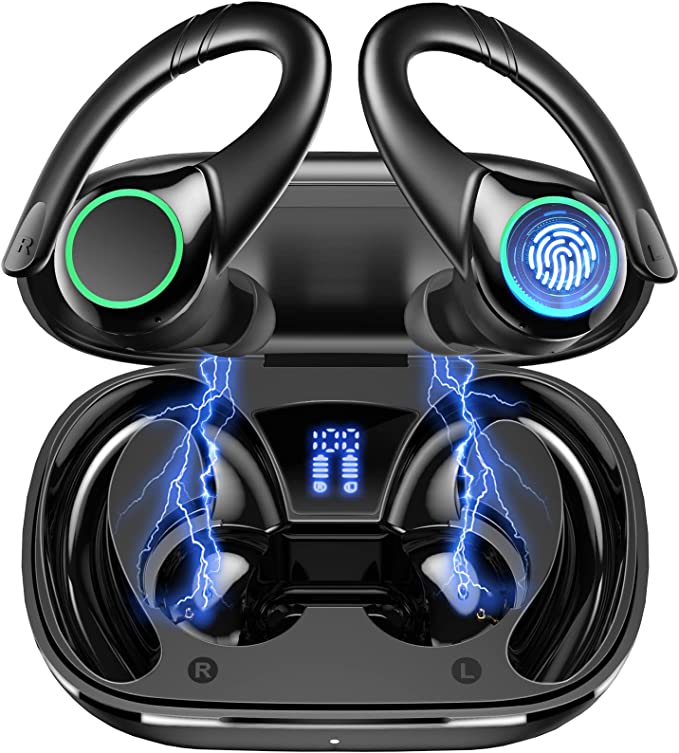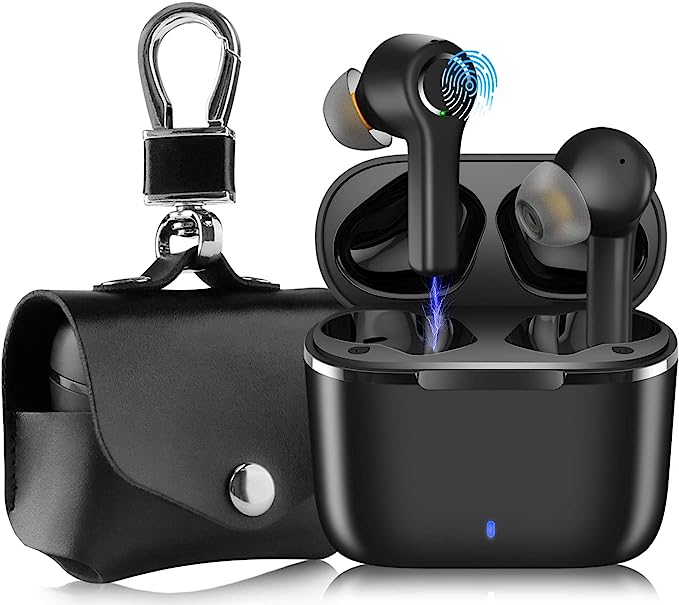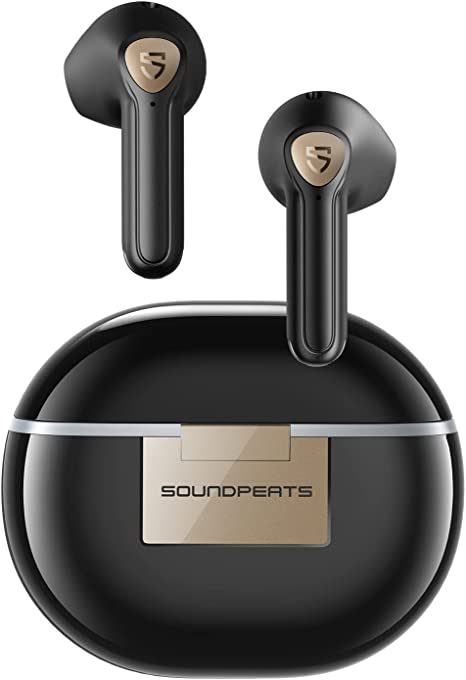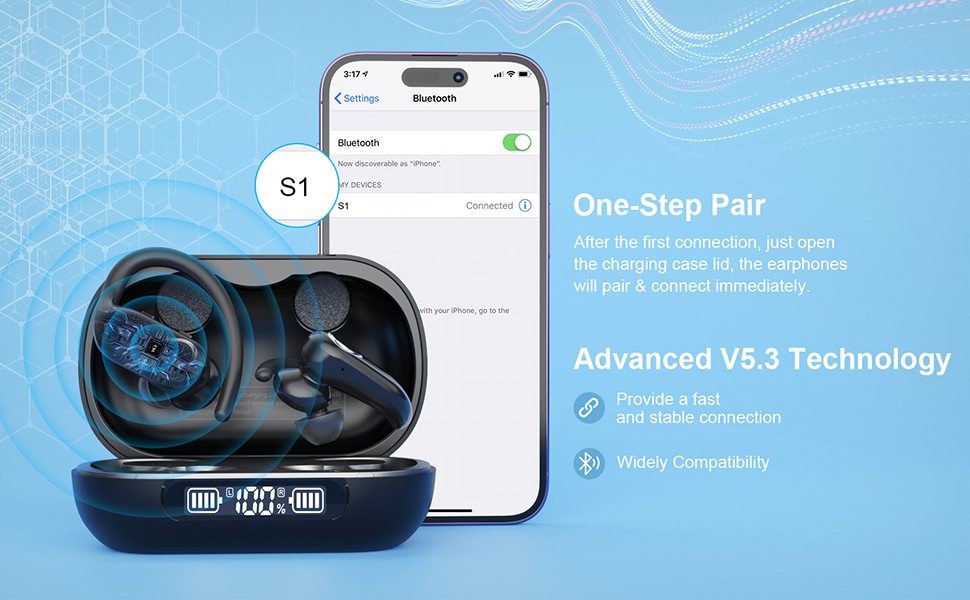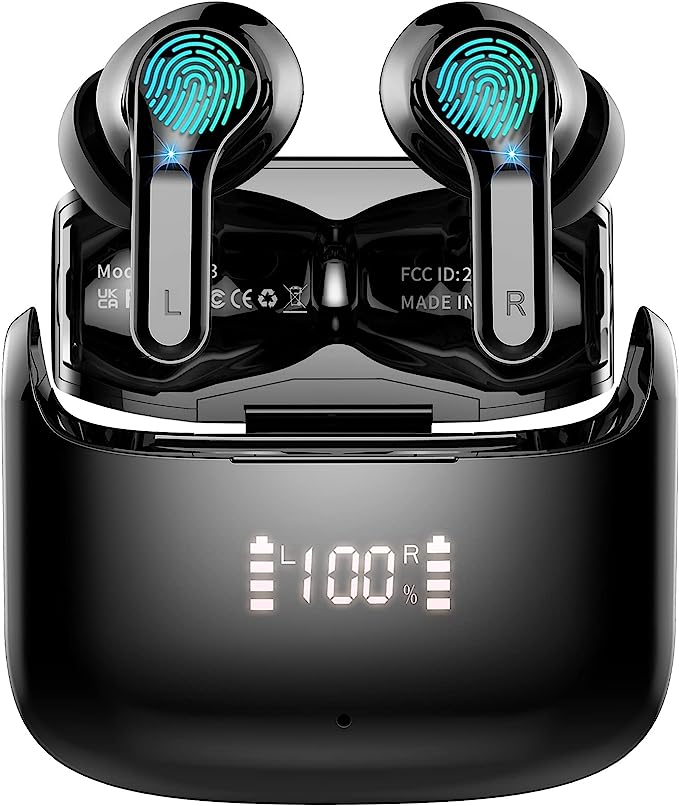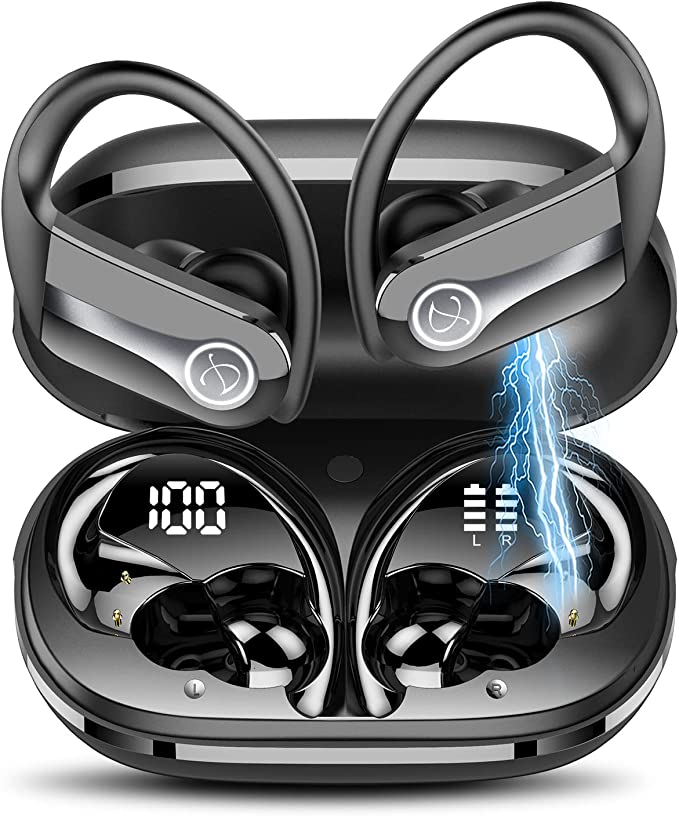Wisezone Q68-SD1 Mini Wireless Earbuds: Tiny yet Mighty Bluetooth Earbuds for an Affordable Price
Update on July 3, 2025, 6:49 a.m.
It began not in a sterile Silicon Valley lab, but in the mind of a 1940s Hollywood superstar. Hedy Lamarr, celebrated for her beauty on the silver screen, harbored a brilliant secret: a patent for a “Secret Communication System.” Her invention, designed to guide Allied torpedoes by rapidly changing radio frequencies, was a stroke of genius. This technique, known as frequency-hopping spread spectrum, was designed to be unjammable, a ghost in the machine.
Decades later, the ghost of that invention flickers to life in an unexpected place: your pocket. The technology that once promised to win wars now streams your favorite podcast, carried on the invisible waves of Bluetooth. And in a compact device like the Wisezone Q68-SD1 Mini Wireless Earbuds, that history of innovation is not just present; it’s the very reason it can exist. But how exactly did a military concept become the heartbeat of our personal audio?

The Ghost in the Machine: Birth of a Wireless King
Lamarr’s idea lay dormant for years until the late 1990s, when engineers at Ericsson in Sweden resurrected the concept to solve a modern problem: connecting different devices without a tangle of cables. They needed a universal, short-range radio standard. In a nod to history, they named it “Bluetooth” after Harald “Bluetooth” Gormsson, a 10th-century Viking king famed for uniting the disparate tribes of Denmark and Norway. The name was a perfect metaphor for their ambition: to unite the disconnected tribes of cellphones, laptops, and printers.
But early Bluetooth, much like a bumpy country road, was slow and power-hungry. The true wireless revolution, the kind that untethers earbuds completely, had to wait for the highway to be built. That highway is Bluetooth 5.1. Found in the Q68-SD1, this modern standard is a world away from its ancestors. It offers a stable, long-range connection while sipping power, thanks to its Low Energy protocol. It’s the reason you can leave your phone on the kitchen counter and still listen to music in the living room without frustrating skips and dropouts. The confusing mention of “Bluetooth 3.0” in the product’s fine print is likely a typo from a bygone era, a fossil reminding us of the massive leap in performance that version 5.1 represents.

A Private Conversation in a Crowded World: The Clever Trick of CVC
Imagine you’re walking down a bustling city street when your boss calls. The sounds of traffic, sirens, and chatter create a wall of noise. Here, the earbuds perform a clever trick, but it’s one that’s widely misunderstood. The Q68-SD1 features CVC 8.0, which stands for Clear Voice Capture.
This is not the same as the Active Noise Cancellation (ANC) found in expensive headphones that creates a silent bubble for the listener. Think of CVC as a dedicated bodyguard for your voice. It uses the built-in microphones to listen to everything—your voice and the chaos around you. Then, its internal digital signal processor (DSP) gets to work. It has been trained to recognize the specific frequencies and patterns of human speech. In a split second, it digitally subtracts the background noise from the signal, allowing only your voice to pass through to the person on the other end of the call.
It’s a brilliant piece of engineering trade-off. Instead of the complex, power-hungry hardware needed for ANC, CVC provides a focused solution to a common problem: call clarity. For a budget-friendly device, it’s not a compromise; it’s an intelligent choice.

Braving the Elements: What IPX5 Really Means
Life doesn’t happen in a controlled environment. A sudden downpour on your commute or a sweaty gym session can be a death sentence for delicate electronics. This is where the Q68-SD1’s IPX5 rating comes into play, a standardized measure of resilience defined by the International Electrotechnical Commission (IEC) in its 60529 standard.
Let’s decode it. “IP” stands for Ingress Protection. The first number rates protection against solids (like dust), and an “X” simply means it hasn’t been tested for that. The second number, the “5”, is the crucial one for water. A rating of 5 means the casing is protected against low-pressure water jets from any direction for at least three minutes.
Think of it as a high-quality raincoat. It will keep you perfectly dry in a steady shower, and you can even rinse it off under a tap. You can run, sweat, and get caught in the rain without worry. However, the raincoat isn’t a submarine. The IPX5 rating doesn’t mean you can go swimming or take a shower with the earbuds. It provides a specific, reliable level of protection tailored for the realities of an active life.

The Art of Smart Technology in Your Palm
From a Hollywood star’s secret patent to a Viking king’s unifying legacy, the journey to the wireless earbuds in your pocket is a remarkable one. A device like the Wisezone Q68-SD1 is more than just a collection of components; it’s a testament to the democratization of technology. It stands on the shoulders of giants, packing decades of complex innovation into an accessible, intelligent package.

By choosing robust standards like Bluetooth 5.1, focusing on practical solutions like CVC, and providing certified durability with IPX5, it embodies the art of smart engineering. Understanding this science and history doesn’t just make you appreciate the technology more. It empowers you to look past the marketing noise, to understand the trade-offs, and to recognize that true value often lies not in having every feature, but in having the right ones, done well.






